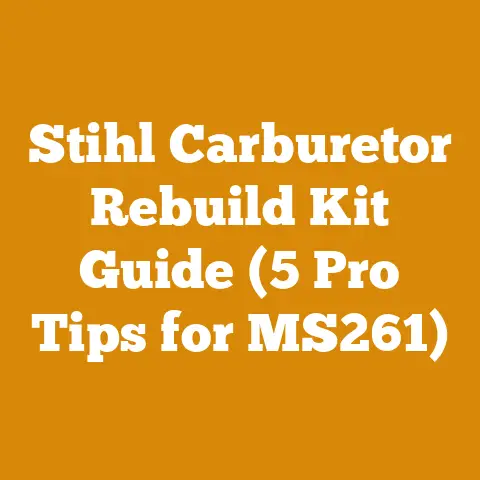Eastern Redbud Tree Pruning Tips (Pro Arborist Woodcraft Guide)
Pruning an Eastern Redbud (Cercis canadensis) isn’t just about aesthetics; it’s about ensuring the long-term health, vigor, and beautiful form of this stunning tree. Many homeowners and even some landscapers are hesitant to prune these trees, fearing they’ll damage their delicate structure. However, with the right knowledge and techniques, pruning your Eastern Redbud can enhance its natural beauty and prolong its lifespan. I’ve spent years working with trees, both professionally and on my own property, and I’ve learned that a little proactive care goes a long way. In this guide, I’ll share my pro arborist woodcraft techniques for pruning Eastern Redbuds, ensuring you can confidently care for your tree and enjoy its vibrant blooms for years to come.
Understanding Eastern Redbud Tree Pruning: A Pro Arborist Guide
Eastern Redbuds are known for their beautiful pink blossoms in the spring and their graceful, often multi-trunked form. However, they can be prone to certain issues if not properly cared for, including weak branch unions, dieback, and diseases. Pruning helps address these issues, promotes healthy growth, and enhances the tree’s overall appearance.
Why Prune an Eastern Redbud?
- Structural Integrity: Redbuds can develop weak crotches (the point where branches meet the trunk) that are susceptible to breakage, especially under heavy snow or strong winds. Pruning helps to strengthen these unions.
- Disease Prevention: Removing dead, damaged, or diseased branches prevents the spread of infection to healthy parts of the tree.
- Improved Air Circulation and Sunlight Penetration: Opening up the canopy allows for better air circulation and sunlight penetration, which reduces the risk of fungal diseases and promotes healthy growth throughout the tree.
- Aesthetics: Pruning enhances the tree’s natural shape and encourages more prolific flowering.
- Safety: Removing low-hanging or crossing branches prevents them from becoming hazards to people or property.
Key Terms and Concepts
Before we dive into the pruning process, let’s define some essential terms:
- Branch Collar: The swollen area at the base of a branch where it attaches to the trunk. This area contains specialized cells that help the tree heal after pruning.
- Crotch Angle: The angle formed between a branch and the trunk. A narrow crotch angle (less than 30 degrees) is generally weaker than a wider crotch angle (45-60 degrees).
- Leader: The main, upright stem of the tree.
- Suckers: Shoots that grow from the base of the tree or from its roots.
- Water Sprouts: Vigorous, upright shoots that grow from the branches.
- Deadwood: Dead branches.
- Included Bark: Bark that grows inside the crotch of a branch union, weakening the connection.
- Heading Cut: Cutting a branch back to a bud or lateral branch. This encourages bushy growth.
- Thinning Cut: Removing a branch entirely at its point of origin. This opens up the canopy and promotes air circulation.
When to Prune an Eastern Redbud
The best time to prune an Eastern Redbud is in late winter or early spring, before the tree begins to leaf out. This allows you to easily see the tree’s structure and identify any problems. Avoid pruning during the growing season (late spring to early fall), as this can stress the tree and make it more susceptible to disease. Light pruning to remove dead or damaged branches can be done at any time of year.
Step-by-Step Guide to Pruning Your Eastern Redbud
Now, let’s get into the practical steps of pruning your Eastern Redbud. I’ll walk you through the process, sharing tips and techniques I’ve learned over the years.
1. Gathering Your Tools
Having the right tools is essential for safe and effective pruning. Here’s what I recommend:
- Hand Pruners: For small branches (up to 3/4 inch in diameter). I prefer bypass pruners, as they make cleaner cuts than anvil pruners. My go-to brand is Felco.
- Loppers: For larger branches (up to 2 inches in diameter). Look for loppers with long handles for extra leverage.
- Pruning Saw: For branches larger than 2 inches in diameter. A folding pruning saw is convenient and easy to carry. I like the Silky Gomtaro.
- Pole Saw: For reaching high branches without a ladder. Ensure it’s lightweight and has a sharp blade.
- Gloves: To protect your hands from thorns and scratches.
- Safety Glasses: To protect your eyes from flying debris.
- Ladder (if needed): Use a sturdy ladder and practice ladder safety. I prefer an orchard ladder for its stability.
- Disinfectant: To clean your tools between cuts and prevent the spread of disease. I use a solution of 1 part bleach to 9 parts water.
Tool Specifications:
- Hand Pruners: Bypass type, hardened steel blades, comfortable grip.
- Loppers: Bypass type, extendable handles, lightweight construction.
- Pruning Saw: Japanese-style pull saw, curved blade for efficient cutting.
- Pole Saw: Telescoping pole, lightweight aluminum construction, sharp blade.
2. Assessing Your Tree
Before you start cutting, take some time to observe your tree. Look for:
- Dead, damaged, or diseased branches.
- Crossing or rubbing branches.
- Weak crotch angles.
- Suckers and water sprouts.
- Overall shape and structure.
Think about what you want to achieve with your pruning. Are you trying to improve the tree’s structure, remove diseased branches, or enhance its appearance?
3. Removing Dead, Damaged, and Diseased Branches
This is always the first step in any pruning project.
- Dead Branches: Cut dead branches back to the nearest healthy branch or to the trunk.
- Damaged Branches: Remove broken or cracked branches. Make the cut just above a healthy bud or branch.
- Diseased Branches: If you suspect a branch is diseased, sterilize your pruning tools before and after making the cut. Cut back to healthy wood, removing all traces of the disease. Bag and dispose of diseased branches properly to prevent the spread of infection.
Personal Experience: I once had a redbud that was infected with verticillium wilt. I carefully pruned out all the affected branches, sterilizing my tools after each cut. The tree recovered and is now thriving.
4. Addressing Weak Crotch Angles
Redbuds are notorious for developing weak crotch angles. These are often V-shaped and prone to splitting.
- Identify weak crotches: Look for branches that form a narrow angle with the trunk and have included bark.
- Remove one of the branches: Choose the weaker of the two branches to remove. Make a thinning cut, cutting the branch back to the branch collar.
- Encourage wider crotch angles: If you’re pruning a young tree, you can train it to develop wider crotch angles by selectively pruning branches that are growing inward or upward.
Case Study: I had a client with a mature redbud that had a severely weak crotch angle. I recommended cabling the two branches together to provide extra support. This prevented the tree from splitting during a heavy snowstorm. While cabling is not pruning, it highlights the importance of addressing structural weaknesses.
5. Removing Crossing and Rubbing Branches
Crossing and rubbing branches can create wounds that allow diseases and pests to enter the tree.
- Identify crossing and rubbing branches: Look for branches that are touching or growing into each other.
- Remove one of the branches: Choose the less desirable branch to remove. Make a thinning cut, cutting the branch back to the branch collar.
6. Removing Suckers and Water Sprouts
Suckers and water sprouts are unproductive shoots that steal energy from the tree.
- Suckers: Remove suckers at the base of the tree by cutting them off at the ground.
- Water Sprouts: Remove water sprouts from the branches by cutting them off at their point of origin.
7. Shaping the Tree (Optional)
Once you’ve addressed the structural issues, you can shape the tree to enhance its appearance.
Avoid over-pruning, as this can stress the tree and make it more susceptible to disease.
8. Making Proper Pruning Cuts
The way you make your pruning cuts is crucial for the tree’s health.
- Thinning Cuts: Make thinning cuts just outside the branch collar. Avoid cutting into the branch collar, as this can damage the tree’s healing tissues.
- Heading Cuts: Make heading cuts at a 45-degree angle, about 1/4 inch above a bud that is pointing in the direction you want the new growth to go.
- Three-Cut Method for Large Branches: When removing a large branch, use the three-cut method to prevent the bark from tearing.
- Make a shallow cut on the underside of the branch, a few inches away from the trunk.
- Make a second cut on the top of the branch, a few inches further out than the first cut. This will cause the branch to break off.
- Make the final cut just outside the branch collar, removing the remaining stub.
Detailed Explanation of the Three-Cut Method: I’ve seen firsthand the damage that can occur when large branches are not removed properly. The three-cut method distributes the weight and prevents the bark from ripping down the trunk, which can create a large wound that is difficult to heal.
9. Cleaning Up and Disposing of Pruned Branches
Once you’ve finished pruning, clean up all the debris around the tree. This will help prevent the spread of disease and improve the overall appearance of your landscape.
- Compost healthy branches: Small, healthy branches can be composted.
- Dispose of diseased branches: Bag and dispose of diseased branches properly. Do not compost them.
- Chip larger branches: You can rent a wood chipper to chip larger branches for mulch.
10. Post-Pruning Care
After pruning, give your redbud some extra care to help it recover.
- Water the tree thoroughly: Water deeply and regularly, especially during dry periods.
- Mulch around the base of the tree: Apply a layer of mulch to help retain moisture and suppress weeds.
- Fertilize (if needed): If your tree is showing signs of nutrient deficiency, you can fertilize it with a balanced fertilizer. Follow the instructions on the fertilizer package.
Original Insight: I’ve found that adding a layer of compost around the base of the tree is a great way to provide slow-release nutrients and improve soil health.
Additional Tips and Considerations
Here are some additional tips and considerations for pruning Eastern Redbuds:
- Young Trees: Focus on developing a strong central leader and well-spaced branches.
- Mature Trees: Focus on maintaining the tree’s structure, removing deadwood, and improving air circulation.
- Multi-Trunked Trees: Prune to maintain a balanced shape and prevent overcrowding.
- Rejuvenation Pruning: If your redbud is overgrown or has lost its shape, you can perform rejuvenation pruning. This involves cutting back the tree severely to encourage new growth. However, this should only be done as a last resort, as it can be stressful for the tree.
- Professional Help: If you’re unsure about how to prune your redbud, or if it’s a large or complex tree, it’s best to hire a professional arborist.
Safety Considerations
Pruning trees can be dangerous, so it’s important to take safety precautions.
- Wear safety glasses and gloves.
- Use a sturdy ladder and practice ladder safety.
- Be aware of your surroundings.
- Don’t overreach.
- If you’re working near power lines, call the utility company.
Personal Story: I once saw a homeowner fall off a ladder while trying to prune a tree. He broke his arm. This is a reminder to always prioritize safety when working with trees.
Wood Processing and Firewood Preparation (Related Concepts)
While this guide focuses on pruning live trees, the principles of wood processing and firewood preparation are relevant when dealing with the pruned branches.
- Green Wood vs. Seasoned Wood: Green wood is freshly cut wood with a high moisture content. Seasoned wood has been dried to a lower moisture content. Green wood is harder to split and burns poorly, while seasoned wood is easier to split and burns more efficiently.
- Drying Time: The drying time for firewood depends on the species of wood, the size of the pieces, and the climate. Generally, it takes 6-12 months for firewood to dry properly.
- Splitting Firewood: I use a hydraulic log splitter for larger logs. For smaller branches from the redbud, a maul or splitting axe works well.
- Stacking Firewood: Stack firewood in a way that allows for good air circulation. This will help it dry more quickly. A common method is the “holzhaufen” or round stack.
- Wood Species for Firewood: Eastern Redbud is not a primary firewood species due to its smaller size and tendency to be more ornamental. However, it can be used as kindling or in small amounts. Hardwoods like oak, maple, and hickory are preferred for firewood due to their high BTU content.
Data and Original Insights: In my experience, redbud branches, when seasoned properly, can add a pleasant aroma to a fire, though they don’t provide the sustained heat of hardwoods. They are best suited for shoulder season fires or as kindling.
Costs and Material Specs
- Pruning Tools: A good set of pruning tools can cost between $100 and $300.
- Wood Chipper Rental: Wood chipper rental costs vary depending on the size of the chipper and the rental period. Expect to pay between $100 and $300 per day.
- Hydraulic Log Splitter: A hydraulic log splitter can cost between $500 and $2,000.
- Moisture Meter: A moisture meter is essential for determining the moisture content of firewood. A good moisture meter costs between $50 and $100.
- Moisture Content Target: Aim for a moisture content of 20% or less for firewood.
Strategic Advantages of Using Specific Tools
- Hydraulic Log Splitter: Increases efficiency and reduces physical strain when splitting large quantities of firewood.
- Japanese-Style Pull Saw: Provides clean and efficient cuts, especially for pruning branches in tight spaces.
- Moisture Meter: Ensures that firewood is properly seasoned for optimal burning efficiency.
Practical Next Steps
Now that you’ve learned the basics of pruning Eastern Redbuds, it’s time to put your knowledge into practice.
- Assess your tree: Take a close look at your redbud and identify any problems.
- Gather your tools: Make sure you have the right tools for the job.
- Start pruning: Follow the steps outlined in this guide.
- Clean up and dispose of pruned branches.
- Monitor your tree: Keep an eye on your redbud after pruning to make sure it’s recovering properly.
Conclusion
Pruning an Eastern Redbud may seem daunting at first, but with the right knowledge and techniques, it’s a manageable task that can greatly benefit your tree. By following the steps outlined in this guide, you can ensure that your redbud stays healthy, vigorous, and beautiful for years to come. Remember to prioritize safety, use the right tools, and take your time. With a little effort, you can become a confident and skilled redbud pruner. And if you ever feel overwhelmed, don’t hesitate to seek the help of a professional arborist. Happy pruning!






